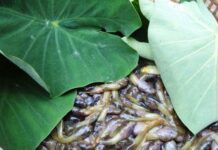The Sterculia Lanceolata tree, or Sang tree, is not only aesthetically pleasing but also holds a special meaning. So, what is the Sang tree? What are its characteristics, and how can you cultivate it to achieve its full beauty? Let’s explore these questions in the article below!
1 What is the Sang Tree?
Origin and Significance of the Sang Tree
The Sang tree, with the scientific name Sterculia Lanceolata, is native to Laos and Cambodia. In Vietnam, it is predominantly found in forests, on hillsides, and in the northern midlands.
The Sang tree is cultivated not only for its shade but also for its symbolic meaning. The significance stems from the very name “Sang,” which translates to “elegant.” This tree represents wealth and prosperity.
According to feng shui principles, planting a Sang tree in front of your house brings abundance and good fortune. As a result, the Sang tree is highly favored by many.
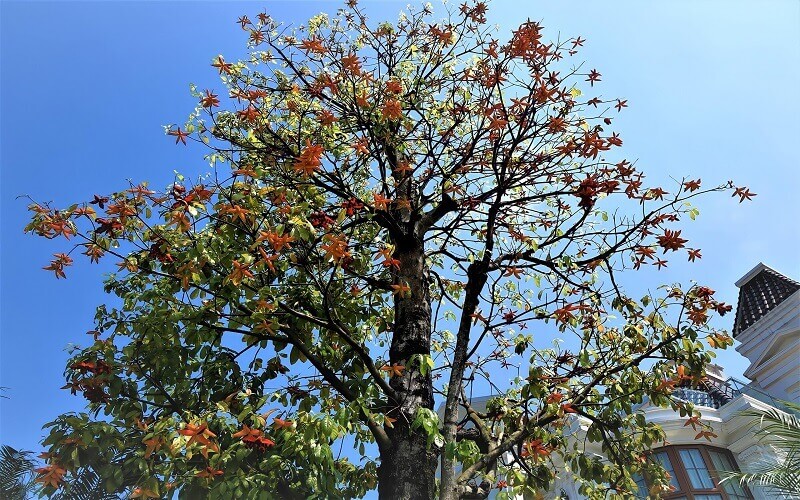 The Sang tree (Sterculia Lanceolata) is a deciduous tree belonging to the Sterculiaceae family.
The Sang tree (Sterculia Lanceolata) is a deciduous tree belonging to the Sterculiaceae family.
Characteristics and Classification of the Sang Tree
The Sang tree is a deciduous tree that can grow up to 10-15 meters tall and has a trunk diameter of approximately 15-20 centimeters. It belongs to the Sterculiaceae family.
The tree grows upright and branches out into multiple branches. What sets the Sang tree apart is its evergreen nature, retaining its leaves even in harsh weather conditions. This characteristic makes it an ideal choice for providing shade in various settings, including parks, streets, village lanes, and gardens.
Another unique feature of the Sang tree is that its flowers are also its fruits. As the flowers or fruits mature, they transform from green to a deep red, blooming like stars and revealing the small Sang seeds within.
These seeds, when fully mature, turn black and can be roasted for a delicious, nutty treat.
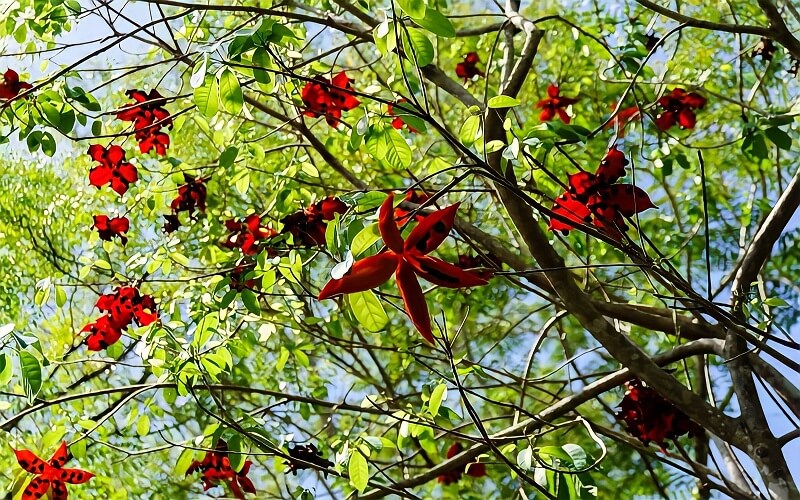 The Sang tree is not only valued for its shade but also carries a symbolic meaning in feng shui.
The Sang tree is not only valued for its shade but also carries a symbolic meaning in feng shui.
2 Benefits of the Sang Tree
Landscaping and Shade
The Sang tree is commonly planted in parks, along streets, and in villages to provide shade and enhance the aesthetics of these spaces.
With its evergreen nature, the Sang tree helps maintain a clean and oxygen-rich environment, contributing to the overall well-being of the community.
Medicinal Properties
Various parts of the Sang tree are used medicinally. The leaves are effective in treating bruises, while the bark is useful for treating boils and is an ingredient in medicines that clear lung heat.
Roasted Sang Seeds as a Snack
The seeds obtained from the Sang tree’s fruits can be roasted to create a tasty and nutritious snack. Imagine starting your day with a cup of tea and a plate of freshly roasted Sang seeds—a delightful treat!
Other Uses
The fibers from the Sang tree’s bark can be used to produce high-quality writing paper and fashionable bags.
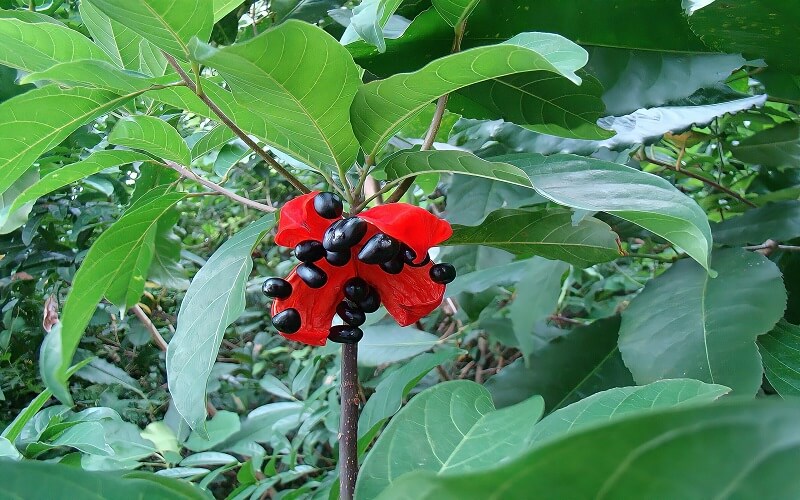 The Sang tree offers a range of benefits beyond its aesthetic appeal.
The Sang tree offers a range of benefits beyond its aesthetic appeal.
3 Planting and Caring for the Sang Tree
Planting the Sang Tree at Home
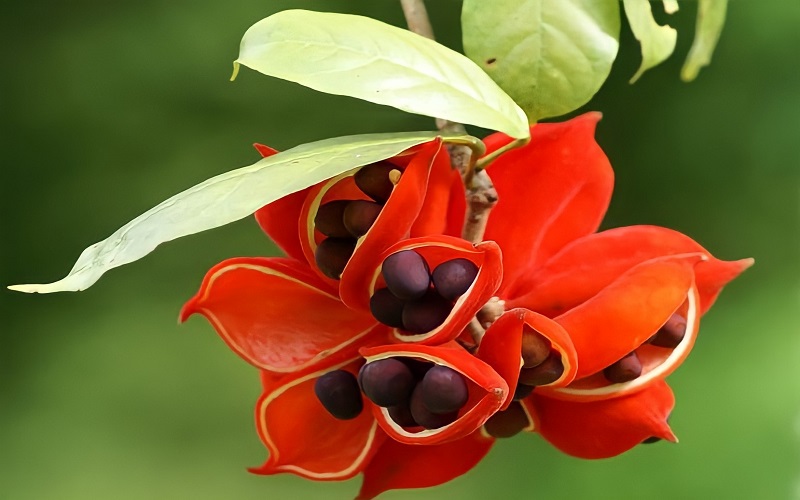 The Sang tree can be propagated through seed germination or cutting.
The Sang tree can be propagated through seed germination or cutting.
Seed Germination Method
- Select mature, round, and black seeds. Store these seeds in a dry place. Loosen the soil and sow the seeds, covering them with a layer of compost. Maintain moisture by regularly watering the seeds.
- After 3-4 months, when the seedlings have emerged, they can be transplanted to their permanent locations.
Cutting Method
- Choose healthy, pest-free branches with a diameter of 1-2 centimeters. After cutting and removing a ring of bark from the branch, wrap the prepared soil around it.
- Within a month, the cutting will develop roots. At this point, you can cut it and plant it in the ground.
- After about two weeks, when the cutting has adjusted to the soil and light conditions, you can start fertilizing and caring for it like a young tree.
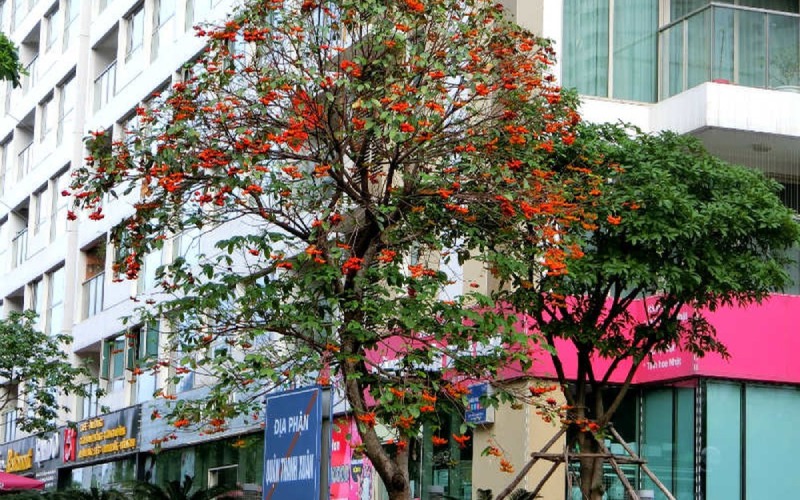 Tips for planting the Sang tree to ensure its beauty.
Tips for planting the Sang tree to ensure its beauty.
Planting Conditions
The Sang tree can be planted in most soil types, except acidic soil, which hinders its growth. Choose a well-ventilated planting location to facilitate the tree’s growth and exposure to sunlight.
Planting Techniques
A week before planting, prepare a hole with a mixture of fertilizer and ash to enrich the soil with nutrients. When placing the Sang tree in the hole, remove the wrapping from the root ball and gently position the tree. Fill the hole with soil and water it immediately after planting.
To ensure the tree’s healthy development, mix a root-stimulating solution with water and pour it over the tree.
Caring for the Sang Tree
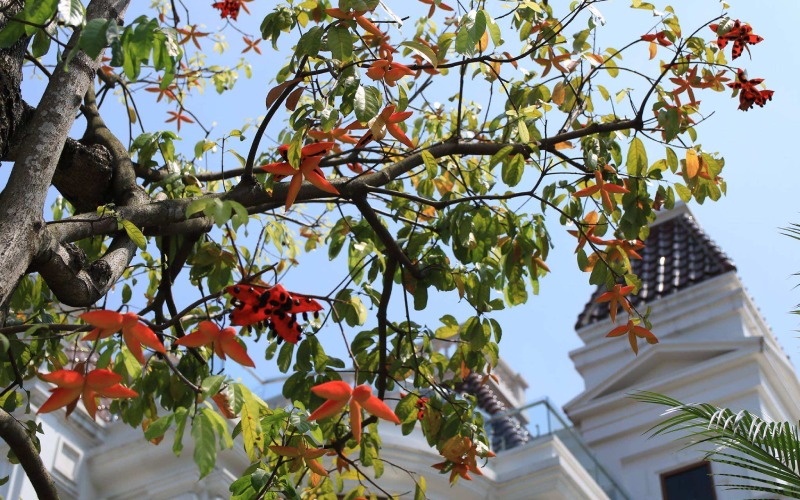 Tips for caring for the Sang tree.
Tips for caring for the Sang tree.
- Maintain moist soil and adjust watering based on the season: increase watering during dry periods and reduce it during the rainy season to prevent waterlogging.
- Regularly prune the tree’s canopy and control pests on the leaves, especially during the flowering period.
- Fertilize the tree periodically every six months.
Notes on Planting and Caring for the Sang Tree
While planting and caring for the Sang tree is not overly complicated, here are some tips to ensure the tree thrives and brings you its full range of benefits:
- Provide adequate water and supplement with fertilizers to ensure the tree receives the necessary nutrients for growth.
- If you notice leaves turning yellow, withering, or wilting, remove them immediately.
- The Sang tree naturally sheds its leaves, but if you observe excessive leaf drop or softening of branches, seek expert advice to address any potential issues promptly.
4 Five Beautiful Images of the Sang Tree
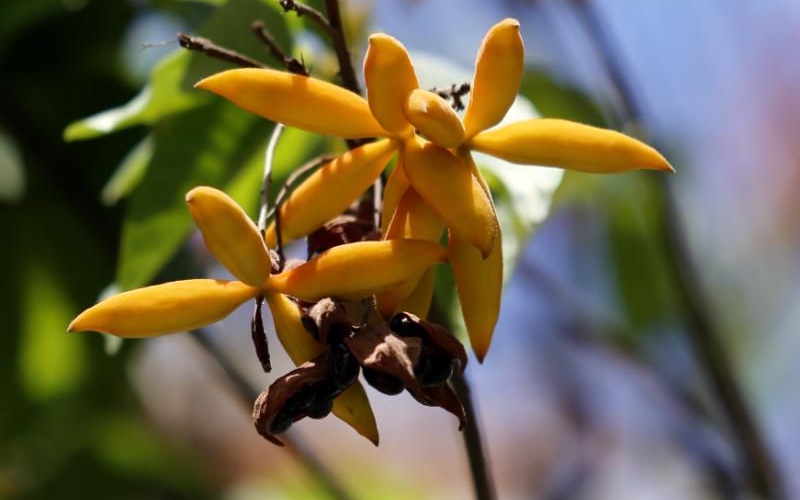 The Sang tree lining a street, providing shade and beauty.
The Sang tree lining a street, providing shade and beauty.
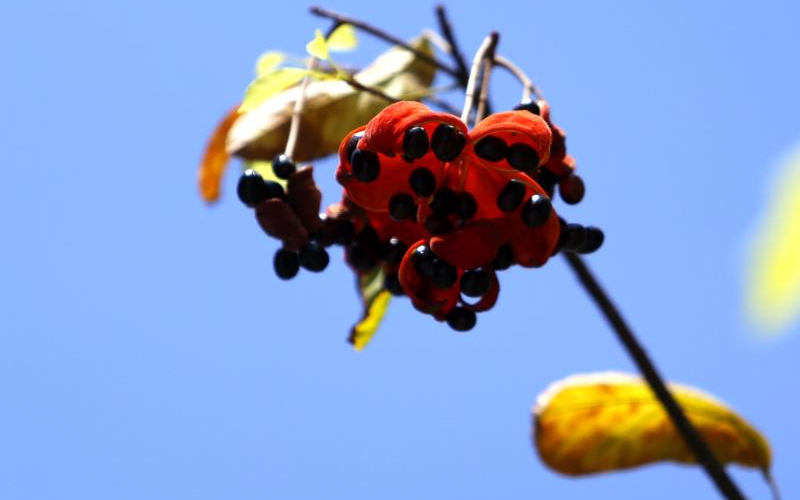 The Sang tree’s unique star-shaped flowers.
The Sang tree’s unique star-shaped flowers.
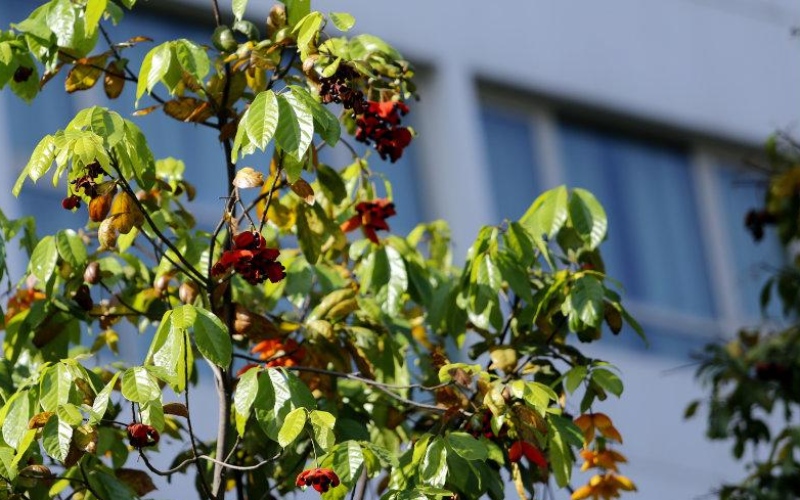 The Sang tree’s flowers transform from a pale yellow to a deep red as they mature, with the black seeds adding a striking contrast.
The Sang tree’s flowers transform from a pale yellow to a deep red as they mature, with the black seeds adding a striking contrast.
 The Sang tree’s flowers in their early stage, with white petals.
The Sang tree’s flowers in their early stage, with white petals.
 As the fruit matures, the red petals open up to reveal the black seeds, enhancing the tree’s elegant and regal appearance.
As the fruit matures, the red petals open up to reveal the black seeds, enhancing the tree’s elegant and regal appearance.
We hope you found this article informative and helpful. Thank you for reading!
2023 Lunar New Year Gift Ideas for Older Family and Friends
As 2021 approaches, families worldwide are gathering to celebrate the special bond between grandparents and their grandchildren. To show their love and admiration, these thoughtfully chosen gifts will bring a smile to the face of the elderly. Here, we have compiled a list of the 13 most meaningful Tet presents that can bring joy to our beloved grandparents.
































